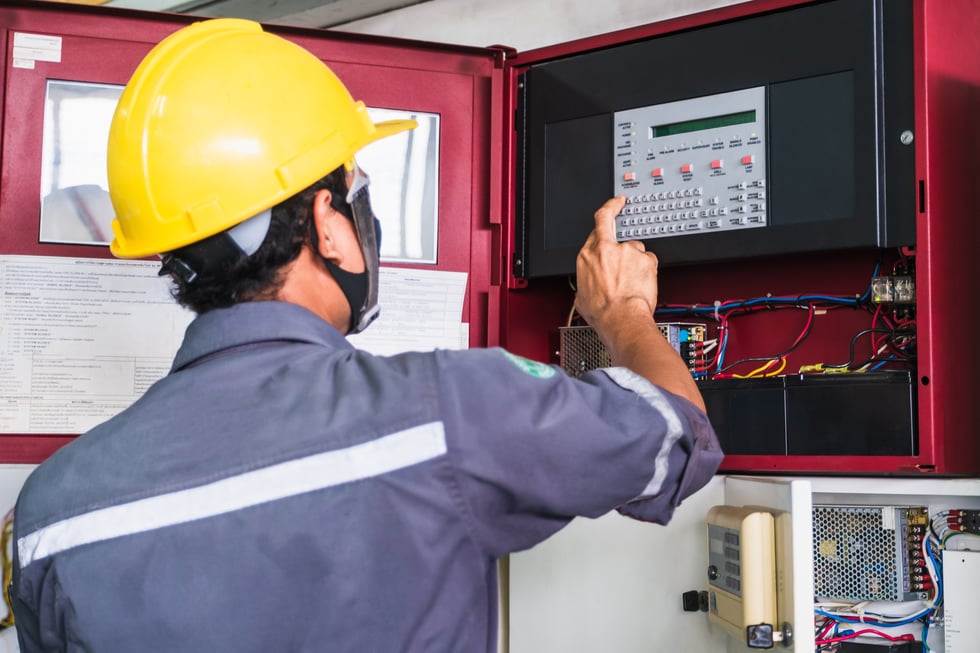In August 2018, a six-alarm fire tore through a large building in Toronto, badly damaging its vital systems – electrical, mechanical, and plumbing. It took more than a year for a report to be released, stating that what caused the fire was an electrical failure. The company owning the building didn't make any specific announcements but it's clear that if someone knows what happened that night, it's the maintenance team or the Facility Manager. Is there anything they could have done differently?
Building codes, Fire Marshall inspections, and safety committee checklists get updated frequently and complying with them might be a real challenge. Any effective maintenance plan involves numerous fire-related tasks and orders – the human brain can't handle them all. That's why having CMMS in place can save so much time and money – and provide crucial safety measures your facility needs. Let's have a look at what systems must be controlled and eat that Fire Protection Elephant.

Fire Protection Systems for Emergency Preparedness
No matter which type of facility you operate – whether it's residential, commercial, or industrial – your ultimate goal is to provide safety for residents, visitors, and employees. However, keep in mind that protecting the facility itself and its assets is a significant contribution to the overall safety plan – and maybe the most fundamental one.
Start with this: it's always a good idea to identify and double protect the most explosive and flammable assets (the world has seen the cautionary tale of a generation in Beirut not too long ago). Including them in your fire protection plan may help you operate the facility in a safe and effective manner.
Typically, a fire protection system will contain the following parts:
- Fire alarm initiating devices. They are typically heat detectors, smoke detectors or even manual pull and break glass stations. If a fire occurs, they activate the system, serving as the point of input for information into the fire alarm control panel.
- Fire alarm control panel, which is the hub of the system. It monitors information coming in from your various contact points and relays the information to the other systems in the workflow. With the right interface, it also can stop elevators, shut off the A/C or power off other machinery.
- Fire notification devices, which let those in the facility know that a fire has been detected. Items that fall under this category include flashing lights, horns, chimes or speakers, and signage or directional evacuation lights.
- Primary power supply allows for current supplied directly from a commercial power company.
- Secondary power supply, or back up units, can be batteries or emergency generators used if a primary power supply failure happens.
The whole fire protection system can be divided into two categories – passive and active.
Passive Protection Systems: Building & Construction Features
Passive Protection System can't be "installed" after the facility is built. Construction projects must be designed according to passive fire protection regulations and safety codes, which are much more complex than they were a generation ago. They aim at breaking any building into compartments divided by fire safety doors or firewalls to prevent the spread of fire.
Firewalls are constructed in such a way as to achieve a fire-resistance rating mandated by the local fire code and are usually made of concrete, concrete blocks, or reinforced concrete. Holes that go through firewalls, such as for pipes and cables, must be protected with a fire stop assembly to prevent the spread of fire through the wall and larger openings, such as doors and windows.

Active Protection Systems: Detection
All buildings need to be equipped with active fire alarm systems designed to detect heat, smoke, or flames, and alert people inside the building as well as in remote control centres (e.g. fire station) to dangerous situations.
It is common for many of these detection systems to be integrated with other building automation systems and they are, in most cases, monitored externally by a security company. Some are automatically linked to elevator functions, visual and acoustic alert systems, and emergency power generators or suppression systems.
Pro-Active Protection Systems: Suppression
Fire detection and alarms provide early warning of an impending fire or smoke situation; however, it is the fire suppression system that jumps into action right away on location. There are various systems available on the market, depending on the building's design, construction details, or code requirements. Examples are wet or dry pipe sprinkler systems, clean agent systems, and kitchen hood systems, all of which are designed to put out a fire before it causes loss of life or significant property damage.
The most common fire suppression system is the wet sprinkler system. Each sprinkler head is angled or aimed in the proper direction, and all of the corresponding mechanisms related to the units, such as compressors and pumps, must be inspected regularly.
CMMS Helps you prepare
Managing inspection and maintenance schedules of your fire systems regularly is an important job and no self-respecting Facility Manager will take it lightly. If done properly, over 20% of your overall preventive maintenance plan will include fire protection related tasks. That's a huge part of your activity, and one can't execute and document all of those items using traditional paper methods alone.
CMMS can help you organize, monitor, track, and document all of the activities related to keeping your facility and its people safe: Preventive Maintenance, remote Task Scheduling and Monitoring, Asset Reports, and many other useful features help you stay on top of it all.
Do you want to know how CMMS can become the tool you can't do without managing your facility? Let's talk about it today – because emergency preparedness can't wait until it's too late.









